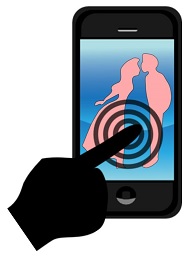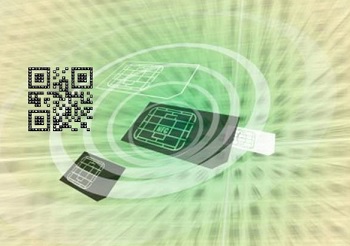While the internet has already greatly changed the way that people meet, smartphones have taken that to a new level.
When it comes to the dating scene in the United States, smartphones and mobile apps are starting to play an increasingly important role, as these applications help to make the process convenient in busy lifestyles.
The primary feature that these applications seem to have to offer consumers is convenience.
While they don’t appear to be any more successful – so far – than any other types of online dating services, the fact that they are convenient appears to be making them highly appealing to consumers is that they can be quickly and easily accessed over a mobile device instead of having to use a website on a computer.
These mobile apps don’t yet seem to have all of the details hammered out quite yet.
While consumers don’t seem to be completely satisfied with the experience, quite yet, the number of users of these applications is rapidly increasing. This is likely due to the effect of word of mouth, and the increasing reliance that many people have on their mobile devices for their day to day activities. Moreover, these apps can give people the chance to discover new people in real time, based on their actual location.
Daters can use apps to post their pictures and view those of other people who are located nearby. If they happen to spot someone they find attractive, they can swipe the picture and indicate that they are interested. If the owner of the picture reciprocates the swipe, the app allows them to contact each other so that they can arrange to meet.
Data from the Pew Research Center has shown that approximately 3 percent of Americans have tried the online dating experience with traditional websites. Aaron Smith, from that organization, pointed out that when it comes to dating apps, those who are using them are typically “quite young, primarily people in their mid-20s or 30s” and very tied to their smartphones.”
These mobile apps have now been around for a while and offer a broad range of different features and opportunities, including integration with social media.
BWild |
February 19, 2014
The contactless tech is now working to catch up within the mobile ticketing space.
ABI Research has released a prediction that NFC technology is making some progress in terms of gaining ground toward QR codes and that this will progress over the next half decade.
It also predicted that in that time there will be 34 billion tickets that will be delivered by way of mobile devices.
The massive number of tickets delivered over smartphones, tablets (and likely wearables, considering the direction that the trend is taking) will define a number of tech trends, particularly when it comes to the time of authentication. This area is currently dominated by QR codes, NFC technology, SMS Bluetooth Smart, mobile wallets, and dedicated apps.
Currently, there is a considerable lead in QR codes over NFC technology for this purpose.
The prediction ran from 2014 through 2019 and it predicted that QR codes will hold their top position at 48 percent of all the tickets that will be delivered over mobile devices. That said NFC technology will make it to 30 percent, and other methods such as SMS will make up the remaining 22 percent. This will mean that near field communication will experience the fastest level of growth throughout that period of time, with a CAGR of more than 100 percent.
QR codes have their massive head start behind their vast majority and the fact that they will be able to hold their position in the lead with mobile ticketing. These quick response codes have already solidly established themselves in a number of large companies, such as Masabi, for ticketing deliveries, allowing it to become well established in ticketing apps such as train and stadium tickets, events tickets, and airline boarding passes. Having gained that position, it is more challenging for other forms of tech to carve out their own place.
The mobile ticketing market is being seen as a solid example of an area in which these new forms of tech are now becoming a regular part of everyday life. NFC technology has seen its struggles but it looks like there are some areas in which it is continuing to experience a notable enough amount of growth.



